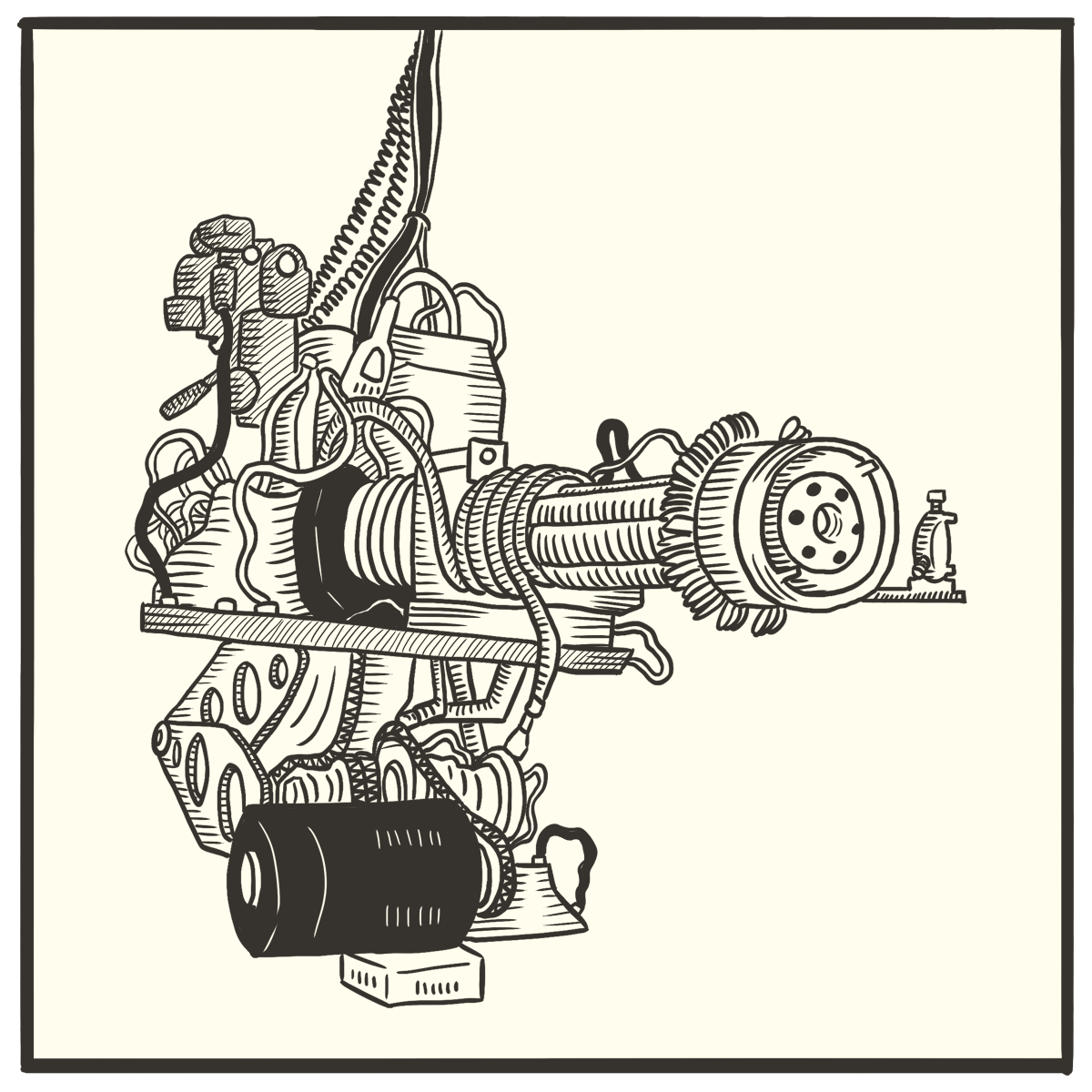
Update: this post now has an AI-generated audio adaptation courtesy of AskWhoCastsAI. If, like me, love listening to brainy stuff, check it out!
1. A problem
Science is hard because it’s abstract. But the only reason it’s abstract is that we’re too big. If we were the size of atoms, physics and chemistry would be captivating. If we were as small as cells, microbiology would be obviously bizarre.
2. Basic plan
Imagine what the world would be like if you got blasted by a shrink ray.
Help the class pretend to shrink down to 1/1000th of your height — to be a little bigger than a millimeter:
Then ask what you might see if you were plunked onto whatever object you’re studying — a towel, a piece of cake, a square yard of grass.
Then use the shrink ray again, and become 1/1000th of that size, then 1/1000th of that size… and so on.
3. What you might see
Kids shrinking down a thousand times to “Milliworld” (where they’re about a millimeter tall) to better understand what’s going on with anatomy.
Kids shrinking down a million times to “Microworld” (where they’re about a micrometer tall) to better understand what’s happening in animal & plant cells, bacteria, and viruses.
Kids shrinking down a billion times to “Nanoworld” (where they’re about a nanometer tall) to better understand how atoms and molecules are interacting.
Kids shrinking down a trillion times to “Picoworld” (where they’re about a picometer tall) to better understand what’s happening inside an atom.
4. Why?
The way that so much of science is presented to students is boring, when so much of what’s actually, physically, going on is obviously fascinating.
There’s a historical reason for this: what we usually teach students is the perspective that was locked in when we first began to understand a phenomenon, often hundreds of years ago, before we had perfected microscopes to be able to see what’s really going on.
Pedagogy needs to keep up.
5. Egan’s insight
Where do we see this in the human experience?
I grew up on Honey I Shrunk the Kids, but shrinking has been, as The Encyclopedia of Science Fiction puts it) a favorite trope of sci fi for a long time — especially the sub-genre known as “imaginary science”.
To wit, 1956’s The Shrinking Man by Richard Matheson,1 which was later made into a movie with perhaps the coolest poster ever:
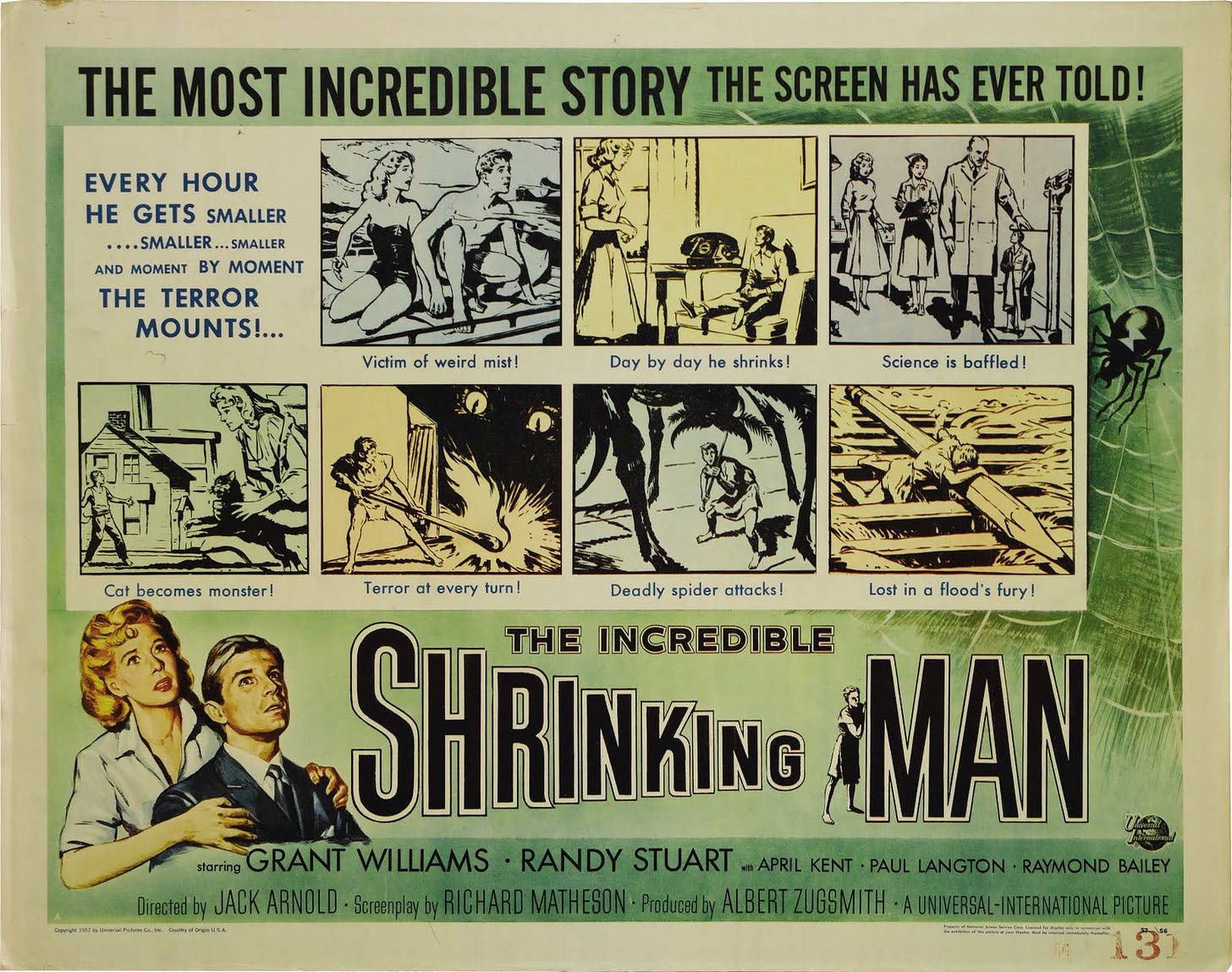
How might this build different kinds of understanding?
It’s common to hear Egan-heads complain about how jumping to PHILOSOPHIC (👩🔬) understanding too quickly can get in the way of a vibrantly intellectual science education. Here, I’d like to suggest something more radical: PHILOSOPHIC understanding makes us stupid about science. It’s flat-out the wrong way to understand physics and chemistry.
Imaginary Interlocutor: Pretty strong words…
I’ll explain.
Classes in the physical sciences typically aim to help students understand 👩🔬CONCEPTS and learn 👩🔬FORMULAS. (What do these weird emoji mean?)
Meanwhile, what actual scientists have discovered is that the abstractions we study in biology, chemistry, and physics are three-dimensional, moving 🤸♀️OBJECTS. “Infections” are actually objects — bacteria and viruses and funguses. “Chemicals” are actually objects — molecules. “Elements” are actually objects — atoms. You could pick them all up and feel their textures, if you had hands small enough. They’re jiggling and shooting around, usually at break-neck speed.
To truly understand these things, we need to tap into SOMATIC (🤸♀️) understanding, and imagine what these things would look, feel, and sound like, if we were somewhere around their size. And to do this, all we need is a little 🧙♂️FANTASY and 🦹♂️SCI-FI.
6. This might be especially useful for…
The sort of person who cannot fathom why anyone would ever want to lug a chemistry textbook home for bedtime reading, but who might watch Ant-Man a half-dozen times.2
7. Critical questions
Q: You seem a little angry about this. Anything you wanna share?
When I was a kid, I thought science was boring.
Dinosaurs, of course, were cool, and I loved asking big questions about the world. But the answers I got from most of my science teachers (at least when they weren’t pushing us through contrived experiments) were pointless-seeming technical terms. It was exactly this “jumping straight to the PHILOSOPHIC” that ruined science for me.
Q: But why the insistence on shrinking to be a micrometer, and a nanometer, and so on? Those words mean nothing to me.
They don’t mean anything to kids at first, either — but they will.
When I started teaching science, I did a “cool science-teacher” size-related exercise that people do know about: I would tell kids “if you were the size of a ____, then ____ would be the size of ____!”
“If you were the size of a molecule, then a human would be the size of a continent!”
“If you were the size of an atom, then a marble would be the size of the Earth!”
“If you were the size of a bacterium, then a nose would be the size of Seoul, South Korea!”
And on and on (and always said breathlessly). The trouble with these is that they don’t stick. There are so many things to remember in any one of these: “Did he say it was a marble, or an orange?” Worse, these metaphors stand by themselves; you can’t compare any object from one to another.
So by choosing these standard sizes (millimeter, micrometer, and so one), we allow us to slowly populate a handful of imagined worlds, where everything we learn about can find a place.
Q: But how do you picture how big any of these sizes are?
More fantasy, obviously.
Hold out your pointer finger, and imagine that, to your surprise, you see a tiny version of yourself standing on top of it, waving at you. Taking care not to let a breeze knock them off, you find a ruler, and see that they’re about 1.5 millimeters tall.
This is you, shrunk down to one-one-thousandth of your height.
Now imagine becoming that person. Pretend to trip on the deep grooves of your fingerprints. Imagine you see the art on the walls seem full miles away, blurry as mountains in the distance. And now you hold out your pointer finger, and imagine that you see an even tinier version of yourself… about 1.5 micrometers tall.
You can keep going from there.
Q: You said that atoms are “objects”, but, um, they’re not — they’re these spinning systems of protons and neutrons and electrons.
Fun fact: nothing is actually an object. Everything is a moving system… but you can only understand that when you shrink down.
In Nanoworld, a single oxygen atom is the size of a dodgeball, with weird bumps suddenly appearing and disappearing.
In Picoworld, a single oxygen atom is the size of a soccer pitch. You could stand inside it; the entire nucleus would be about the size of a raspberry, and each electron would be a fruit fly buzzing around it:
Again: to go 🤸♀️SOMATIC and engage 🧙♂️FANTASY brings you to a more scientifically accurate way of understanding the world than 👩🔬 CONCEPTS and 👩🔬FORMULAS ever could.
Can you think of some way this could go terribly, terribly wrong? Frankly, WE WOULD LIKE TO KNOW ABOUT IT. Become a subscriber and join in the comments conversation.
8. Physical space
Put up a SIZE LINE° on the wall, onto which different objects (e.g. different atoms, proteins, microscopic animals, and so on) can be drawn, according to scale.
9. Who else is doing this?
I was inspired to do this by the website The Scale of the Universe, made by the twins Cary and Michael Huang in 2010 (when they were just 14 years old). I was also motivated by by the 2012 short film Cosmic Eye —
which was in turn inspired by the 1977 film Powers of 10 —
which was in turn inspired by the essay “Cosmic View: The Universe in 40 Jumps” which came out in 1957… one year after Richard Matheson’s short story.
But these are all visual, and relatively static. The full power of this comes by embodying these worlds — imagining ourselves scrambling across bizarre landscapes, and shaking molecules to see them shake apart. I think that Science is WEIRD (the online science-education company I run) is the only place doing anything like this at present — I’d love for that to change.
How might we start small, now?
Picture, for a moment, how pollen looks and feels from your perspective as a giant —
and then imagine how it would look and feel if you were one-one-millionth of your height, in Microworld —
10. Related patterns
Make a SIZE LINE° so you can compare these imagined experiences between objects and years. This also is a way to help kids IMAGINE THE TRUTH IS TRUE°.
Afterword:
Y’know, what with all the craziness in the world at the moment, it’s really nice to get to focus on education — the seeds of building something more resilient.
Also the author of the wonderful vampires-except-it’s-hard-science-fiction novella I Am Legend, later turned into a ho-hum zombie movie with Will Smith.
A fun heist film! The recent sequel (Ant-Man and the Wasp: Quantumania) sucked in part because it abandoned the Honey-I-Shrunk-the-Kids-wouldn’t-it-be-cool-to-explore-size premise, and had the characters jump straight down to “the quantum” level where they discovered… another Marvel world. The Pym-suits could have been teleporters, for all they added to the plot.




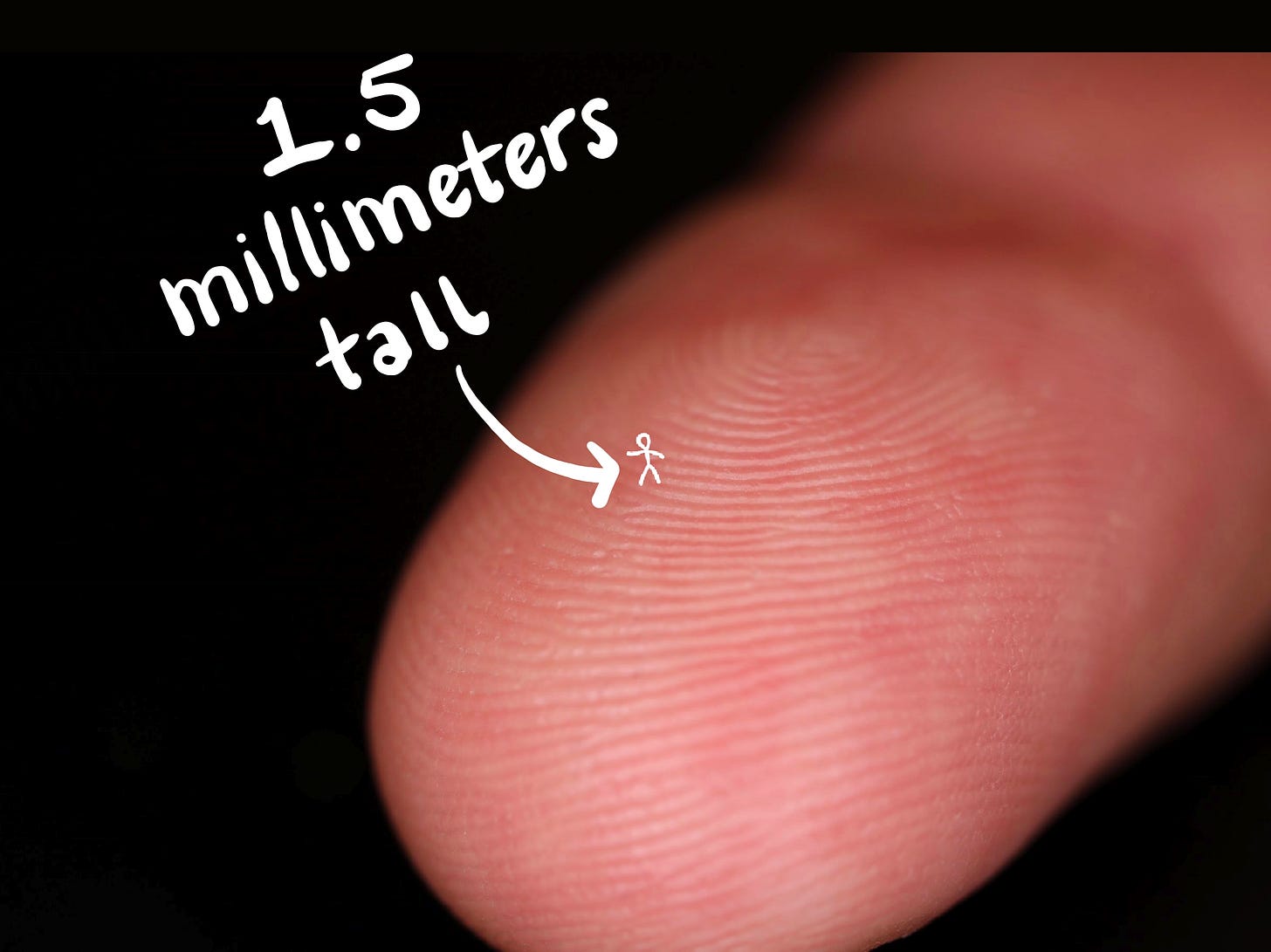
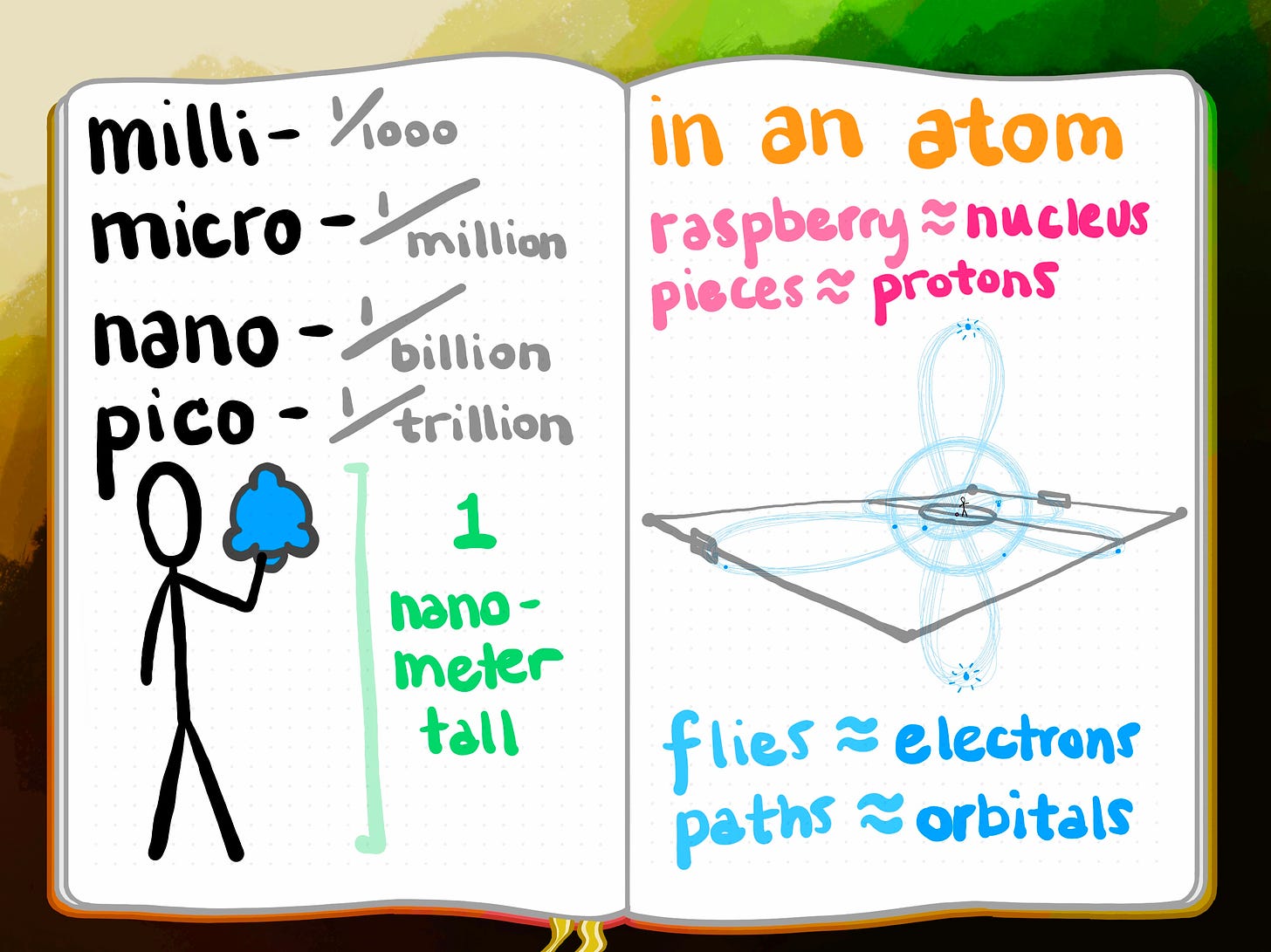
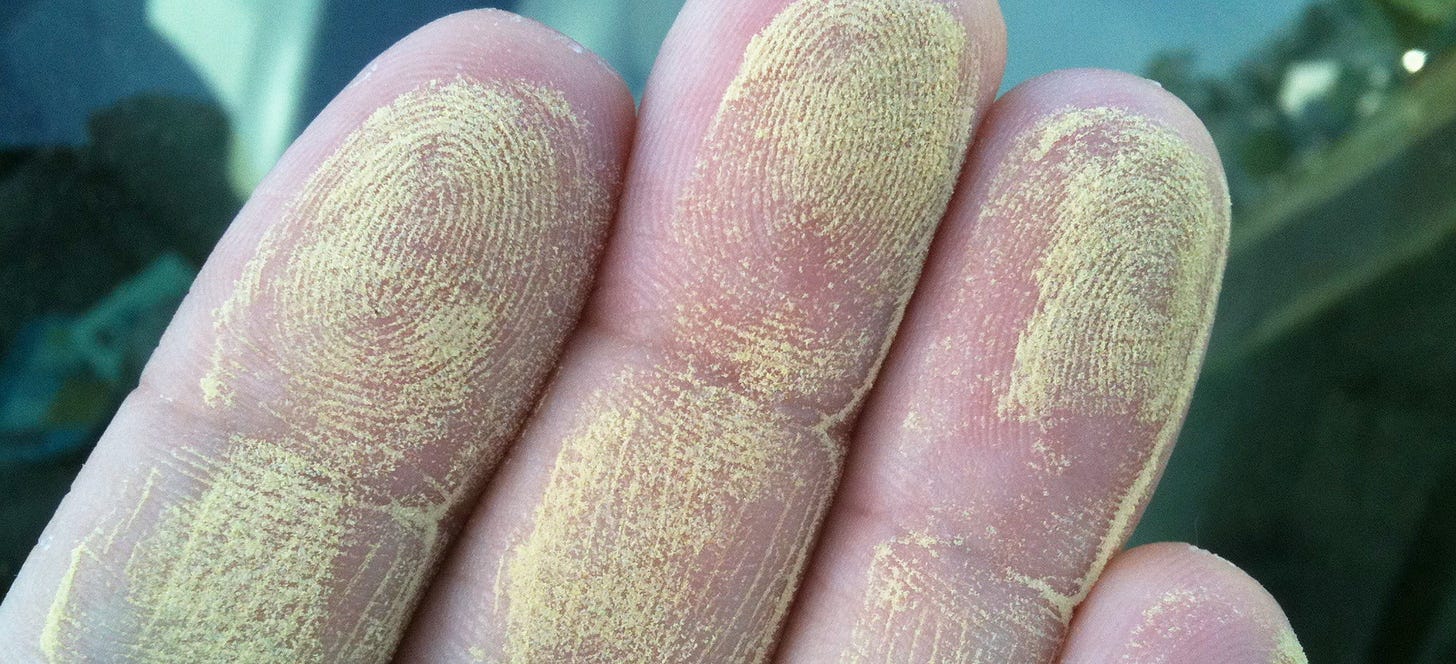
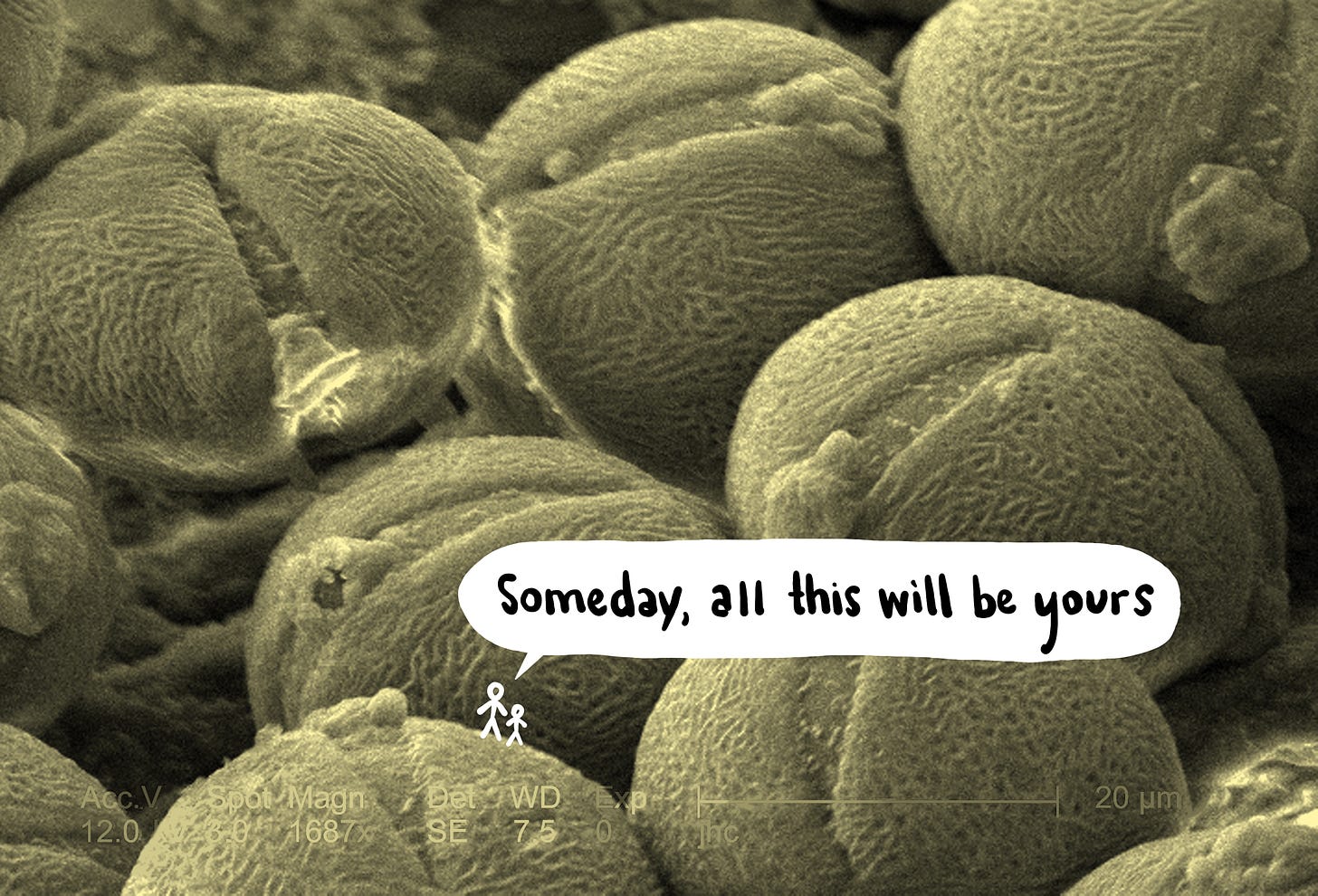
This was also a main plot device in at least a few Magic School Bus episodes.
For example:
- https://magicschoolbus.fandom.com/wiki/For_Lunch
- https://magicschoolbus.fandom.com/wiki/Meets_Molly_Cule
I've run this post through ElevenLabs for an accessible AI narration, let me know if you are OK with this being posted!
https://askwhocastsai.substack.com/p/the-shrink-ray-by-brandon-hendrickson